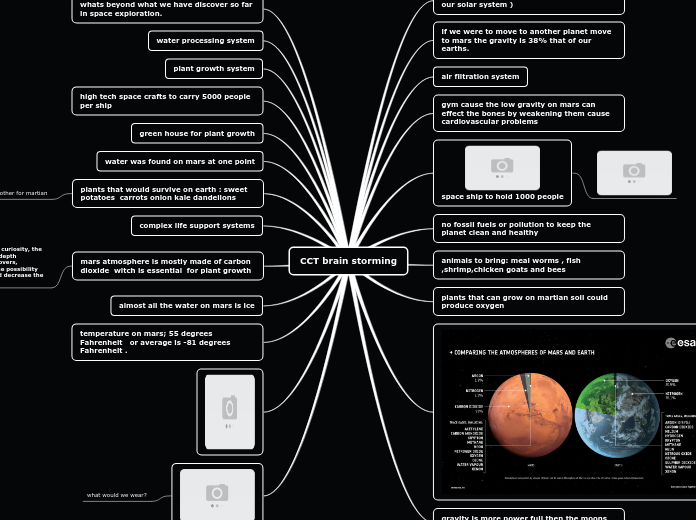Earth Science
Astronomy
Exploring Space
The-Sun-Earth-Moon-System
Exploring Earth's Moon
Impact Basin
The Moon Earth's Satellite
Motions Moons
Reflection of the sun
Equinox
Earth Data Review
Solstice
solstice
What causes changing seasons
Radiation from the sun
A Titled Axis
Orbiting the sun
Ellipse
Revolution
Magnetic Field
Magnetic Axis
Properties of Earth
Rotation
rotation
axis
Additional Evidence
Sphere Shape
Sphere
The Solar System
Other Objects in the Solar System
Asteroids
Exploring Asteroids
Asteroid Sizes
Meteoroids, Meteors, Meteorites
Meteor Showers
Comets
Structure of Comets
Comet Hale-Bopp
Oort Cloud
The Inner Planets
Mars
Odyssey and Mars Exploration Rovers
Pathfinder and Global Surveyor
The Viking Probes
Earth
Venus
Mercury
Future Mission
Does Mercury have an Atmosphere
Inner Planets
How the Solar System Formed
Planet Formation
Ideas About the Solar System
Modern View of the Solar System
Sun-Centered Model
Earth-Centered Model
Stars and Galaxies
Galaxies and the Universe
Big Bang Theory
Galaxy
Evolution of Stars
Black Hole
Neutron Star
Supergiant
White Dwarf
Giant
Nebula
The Sun
Sunspot
Corona
Chromosphere
Photosphere
Stars
Absolute Magnitude
Apparent Magnitude
Light-year
Constellations
Geology
Minerals
Useful Elements in Minerals
ores
Vein Minerals
Uses of Mineral
Properties of Gems
germs
Mineral Identification
Cleavage and Fracture
Streak
Specific Gravity
Luster
Mohs Scale
Mineral Appearance
Hardness
Mineral Compositions and Groups
Silicates
Structure of Minerals
Crystals from solutions
Crystals from magma
Crystals
What is a mineral
Atom Patterns
Mineral Characteristics
Mineral
Rocks
Sedimentary Rocks
Stacked Rocks
Formation of Sedimentary Rocks
Sediments
Metamorphic Rocks
Classifying Metamorphic Rocks
Foliated Rocks
Nonfoliated Rocks
Formation of Metamorphic Rocks
heat and pressure
hot fluids
Rock Cycle
10) Melting
9) Metamorphic Rock
8) Heat and Pressure
7) Sedimentary Rock
6) Compact and Cementaion
5) Sendements
4) Weathering and Erosion
3) Igneous Rock
2) Cooling
1) Magma
Igneous Rocks
Formation Of Igneous Rocks
Magma
Lava
Intrusive Rocks
Extrusive Rocks
Volcanic Glass
Extrusive
Obsidian
Pumice
Rhyolite
Andesite
Scoria
Basalt
Intusive
Granite
Diorite
Babbro
Earthquakes
tsunami
liquefaction
Magnitude
Measuring Seismic Waves
seismograph
Features of Earthquakes
Seismic waves
focus
primary waves
secondary waves
surface waves
epicenter
Types of Faults
normal faults
reverse faults
strike slip fault
plate tectonics
water and land Erosion
rill and gully erosion
channels
sand erosion
stream erosion
sheet erosion
runoff
Names of volcanoes,eruption force, and production of volcano
Popocatepetl, Mexico
gas,ash
Soufriere Hills, Montserrat
gas,ash,rock
Mount PIntatubo, Philippines
Kilauea, Hawii
low
lava
Mount St. Helens, Washington
Surtsey, Iceland
Paricutin, Mexico
ash, cinders
Mount Katmai, Alaska
lava, ash, gas
Vesuvius, Italy
Kraktau, Indonesia
Mount pelee, Martinique
gas, ash
Tambora, Indonesia
high
cinders, ash
Mount Etna, Sicily
moderate
lava, ash
Volcanoes
Cinder Cone
Shield Volcanoes
shield Volcanoes
Explosive Magma
water vapor
quiet eruption
trapped gases
magma forced upward
vents
crater
Meteorology
weather
temperature
snow
ice
below 0 celcious
dry
less molecules in air
high pressure
humid
feels sticky
more molecules in air
rain/storms
low pressure
wind
storms
hurricane
warm moist aie
rain
clouds
air temperature
hot
on the top
more amount of water vapor
cold
on the bottom
less amount of water vapor
Atmosphere
Temperature in the Atmosphere
Troposphere (20 C or below)
Stratosphere (0 C and below)
Mesosphere (-80 C and below)
Exosphere (over 800 C)
Atmospheric pressure
Molecules pressurized in troposphere.
Gravity brings layers closer
Exosphere is the complete opposite of troposphere
Gravity pulls troposphere closer to
the earth. This is the reason why life thrives towards the ground.
Upper layer
Mesosphere (85)
Ionosphere (100)
Radio waves
Electrically charged
"solar charged"
Able to transfer waves when "charged" at night
Light charges radio waves
Waves reflect off of ionosphere
Thermosphere (150)
Exosphere (800)
Lower Layer
Troposphere (10 km)
Contains oxygen, carbon dioxide, and nitrogen as well
as other gases.
The main air we breathe, play, and sleep in
Stratosphere (50 km)
Ozone layer
Ozone hole
Comes around August and September
Arctic Circle
Ozone is unavailable during this fall
By December circle is gone
Ozone layer is getting thinner.
Blame of global warming goes to CFC's
6. Broken CFC leaves to break up other ozone
5. Oxygen rejoins with oxygen
4. Previously connected oxygen breaks
up the CFC and oxygen
3. CFC connects with oxygen atom and abandons other molecules
2. A broken CFC molecule breaks ozone molecule
1. UV breaks up CFC molecule
Ultraviolet rays destroy chlorofluorocarbons
Absorbs ultraviolet radiation
Ozone made up of 3 molecules instead of the normal 2.
Oxygen filled layer ( the point and reason your even alive)
Mixture of gases, solids, and liquids
water
Dust, Salt, Ash
O3, Carbon Dioxide, Nitrogen
Climate
Seasons
Seasons are short periods of climate changes
Large bodies of water
Tropics
Mountains
Rain Shadows
Subtopic
Adaptions
High latitude
Latitude
Polar Zones
Hibernation
Temperate Zones
El Nino
La Nina
Oceanography
Ocean Currents
Density Currents
Intermediate Waters
Deep Waters
UpWelling
Surface Currents
Warm and Cold Surface Currents
Tracking Surface Currents
The Gulf Stream
Ocean Water
Composition of Oceans
Desalination Plants
Desalination
Removal of Elements
Salts
Origin of Oceans
Basins
Importance of the Oceans
Varied Resources
Ocean Pollution
Controlling Pollution
Effects of Pollution
Sources of Pollution
Sediment
Solid-Waste Pollution
Oil Pollution
Chemical Pollution
Sewage
Pollution
Ocean Waves and Tides
Waves
How Water Waves Forms
The Gravitational Effect of the Sun
The Gravitational Effect of the Moon
Tidal Bores
Extreme Tidal Ranges
Tidal Range
Tide
Breakers
Wave Movement
Describing Waves
Trough
Crest
Life in the ocean
Ocean Margin Habitats
Esturaries
River Mouth
Rocky Shore Areas
Beaches
Ocean Life
Bottom Dwellers
Lizardfish
Sandperches
Hawkfish
Dragonets
Benthos
Nekton
Swim/Move Independently
Plankton
Drift in Sea/Fresh Water
Microscopic Organism
Life Processes
Other Life Processes
Chemosynthesis
Energy Relationships
Photosynthesis
Seafloor
Mineral Resources
Deep-Water Deposits
Continental Shelf Deposits
Ridges and Trenches
Subduction Zones
Trench
Long, Narrow Ditch
Mid-ocean ridge
Underwater Mountain Range
Relatively Shallow
Ocean Basin
Abyssal Plains
On Deep Ocean Floor
Underwater Plain
Continental Slope
Continental Shelf









